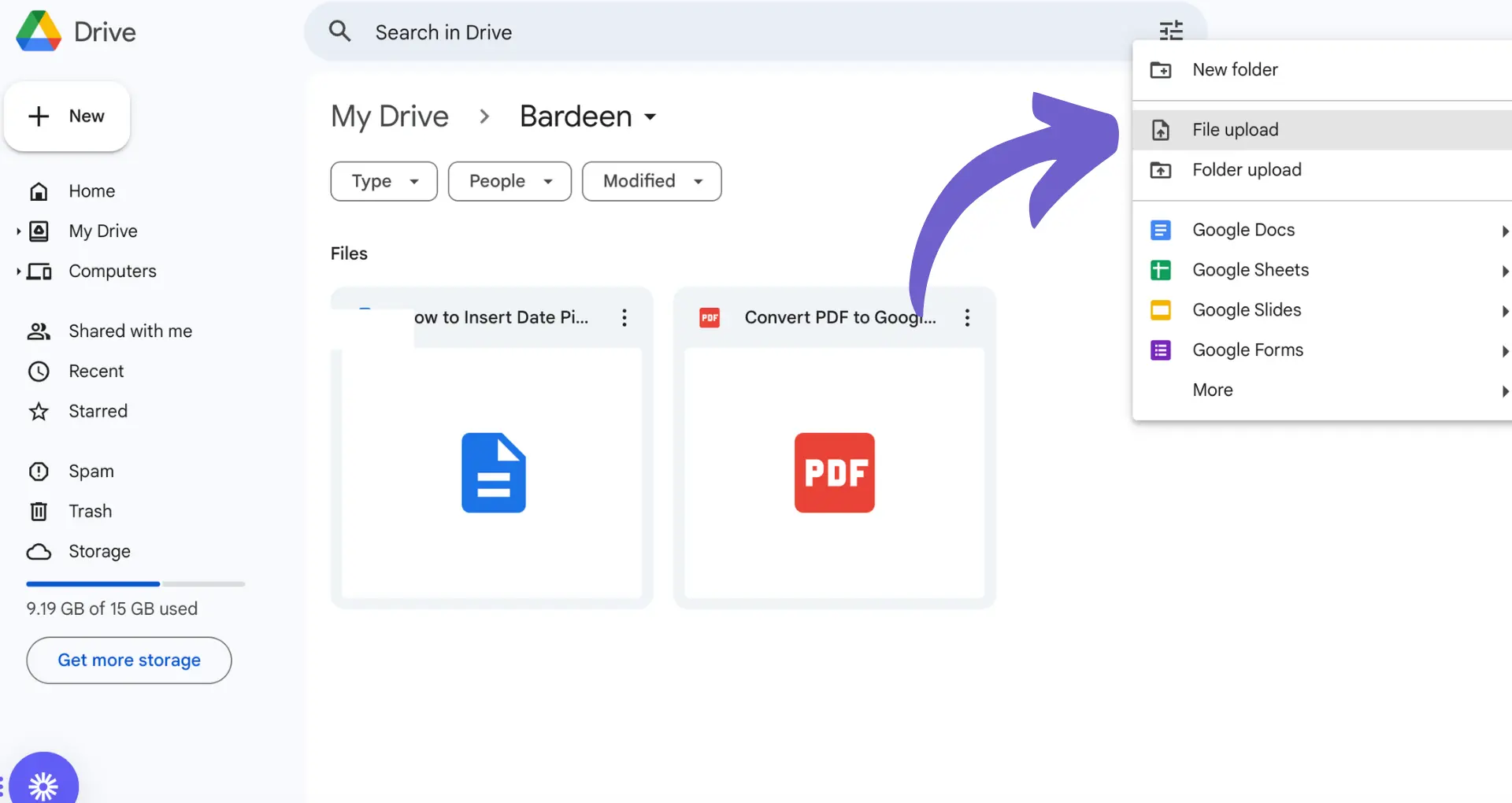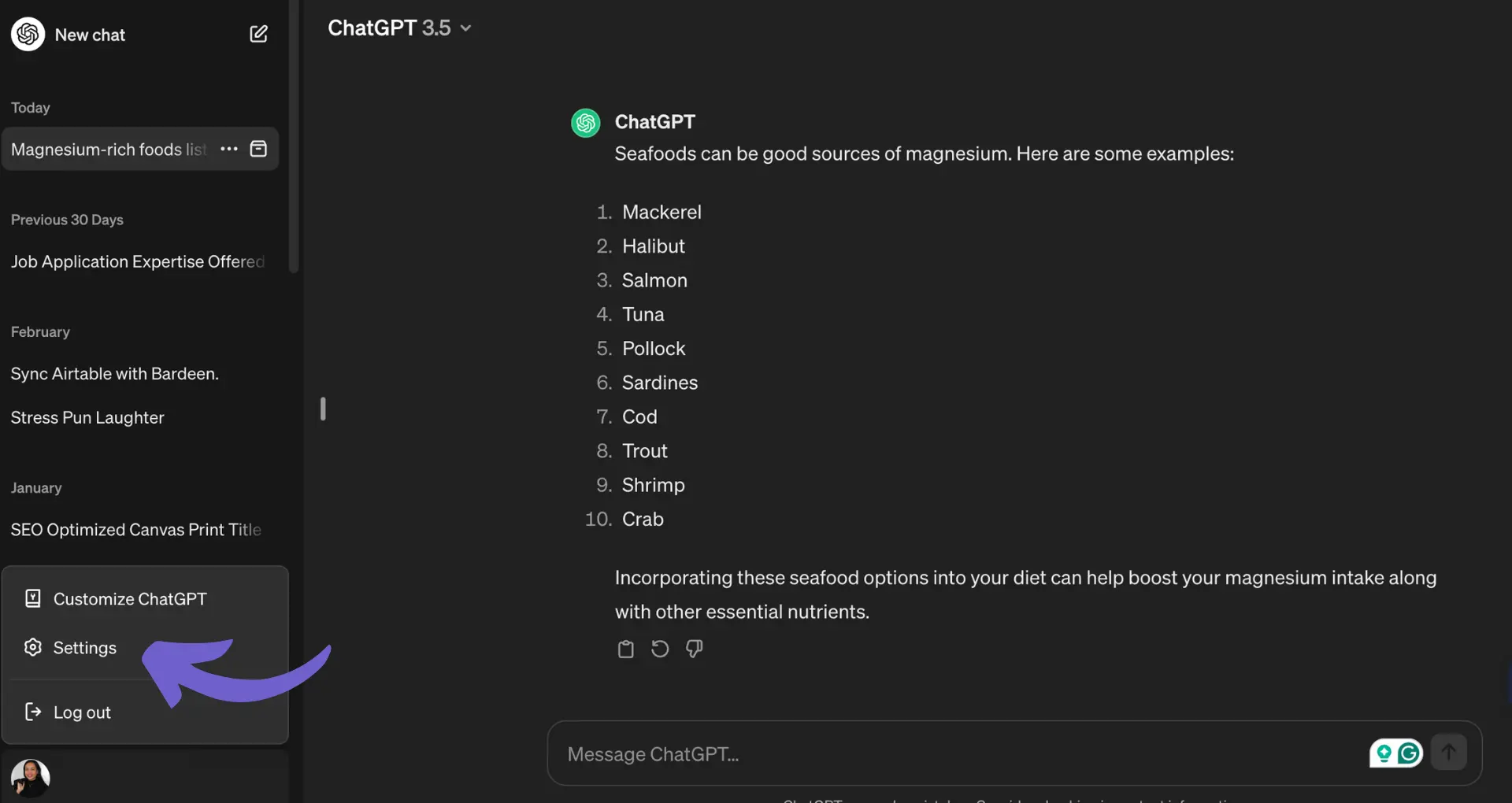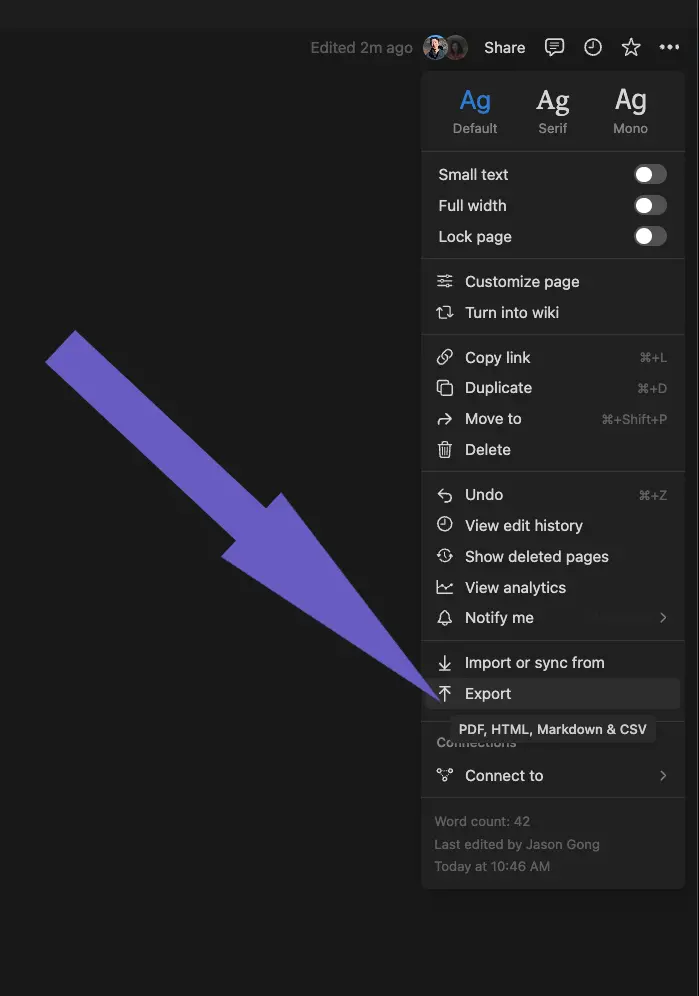





Upload your PDF to Google Drive, open with Google Docs, then copy to Google Sheets.
By the way, we're Bardeen, we build a free AI Agent for doing repetitive tasks.
If you need to import data from PDFs, try our GPT in Spreadsheets feature. It automates data extraction and saves you a lot of time.
Importing data from PDFs into Google Sheets can be a challenging task, especially when dealing with large volumes of information or complex PDF structures. Whether you're a business owner looking to analyze financial reports or an individual managing personal records, converting PDF data into a spreadsheet format like Google Sheets is often necessary. In this step-by-step guide, we'll explore various methods and tools to help you efficiently import data from PDFs into Google Sheets, saving you time and effort in the process.
Importing data from PDFs into Google Sheets is a common task for businesses and individuals who need to analyze or manipulate data stored in PDF format. PDFs are widely used for sharing reports, invoices, and other documents containing structured data, but extracting this information can be challenging. Some typical scenarios where converting PDF data to Google Sheets is necessary include:
While PDFs are convenient for distributing information, their structure and format can make it difficult to directly import the data into Google Sheets. Unlike spreadsheet formats such as CSV or Excel, PDFs are designed for visual presentation rather than data manipulation. This incompatibility creates challenges when attempting to copy and paste data from a PDF into Google Sheets, often resulting in formatting issues or data loss. To simplify this process, consider using tools that bring AI into your spreadsheet.
PDFs are designed for visual presentation and document exchange, not for easy data extraction. The structure of a PDF can be complex, with data stored as images of text rather than selectable, editable text. This makes direct data extraction challenging for several reasons:
These characteristics of PDFs mean that specialized tools and techniques are often required to accurately extract data. Simple copy-and-paste or text extraction methods may result in garbled or incomplete data, especially when dealing with complex layouts or scanned documents.
To overcome these challenges, advanced PDF data extraction solutions often employ techniques like data enrichment and optical character recognition (OCR) to convert images of text into machine-readable text, and layout analysis to identify and extract structured elements like tables and paragraphs. However, even with these tools, extracting data from PDFs can be an involved process that requires careful validation and cleanup of the extracted data.
Save time on data extraction by using automated workflows from Bardeen. Focus on important work while automating the rest.
Several tools and software solutions are available for converting PDF files to Google Sheets, each with varying capabilities and ease of use. These include:
For more complex PDF documents, specialized tools like Nanonets use advanced techniques such as optical character recognition (OCR) and intelligent layout analysis to extract data accurately. These tools can handle scanned PDFs, multi-page documents, and complex table structures, making them suitable for automating data extraction from large volumes of PDFs.
When choosing a PDF to Google Sheets conversion tool, consider factors such as:
By selecting the right tool for your needs, you can streamline the process of converting PDF data into a format that's ready for analysis and manipulation in Google Sheets.
Google Docs provides a simple and free method to convert PDF files into editable documents. Follow these step-by-step instructions to convert your PDF content:

Once your PDF is converted into a Google Docs document, you can easily transfer the data to Google Sheets:
Keep in mind that while Google Docs is a convenient option for converting simple PDF files, it may not always preserve complex formatting, images, or tables. For more advanced PDF conversions, consider using specialized tools or software designed to handle complex PDF structures and integrate Google Drive with other apps for accurate data extraction.
Use Bardeen to integrate Google Drive with other apps and automate file management. Spend less time organizing files and focus on important tasks.

Optical Character Recognition (OCR) is a powerful technology that enables the conversion of scanned PDF documents into editable and searchable text. By leveraging OCR, businesses can streamline their data processing workflows and extract valuable information from scanned documents with ease.
OCR works by analyzing the structure and patterns within an image, identifying individual characters, and then converting them into machine-readable text. This process allows users to unlock the data trapped within scanned PDFs, making it accessible for further processing and analysis.
When it comes to integrating OCR with Google Sheets, there are several tools and platforms available that offer seamless connectivity. These OCR solutions can automatically extract text from scanned PDFs and import the data directly into Google Sheets, eliminating the need for manual data entry.
Some key benefits of using OCR for Google Sheets integration include:
By leveraging OCR technology, businesses can significantly reduce the time and effort required to extract data from scanned PDFs and import it into Google Sheets. This streamlined process enables teams to focus on higher-value tasks and make data-driven decisions more efficiently. Check out how to integrate Excel for even more powerful workflows.
Automating the process of importing PDF data into Google Sheets can significantly streamline your data management workflows. By leveraging APIs and automation platforms, businesses can set up continuous data synchronization between PDFs and Google Sheets, eliminating the need for manual data entry and reducing the risk of errors.
One powerful approach to automating PDF to Google Sheets conversion is through the use of APIs. Many PDF extraction tools offer APIs that allow developers to programmatically extract data from PDFs and import it directly into Google Sheets. These APIs enable seamless integration between the PDF extraction software and Google Sheets, facilitating automated data transfer.
Here's an example of how an API-driven workflow might look:
Another approach to automating PDF to Google Sheets conversion is through the use of automation platforms like Bardeen, Make, or n8n. These platforms allow users to create automated workflows that connect various apps and services, including PDF extraction tools and Google Sheets.
With automation platforms, you can set up triggers and actions that automatically convert PDF data and import it into Google Sheets. For example:
By automating the PDF to Google Sheets conversion process, businesses can save time, reduce manual effort, and ensure data accuracy. Automated workflows can be scheduled to run at regular intervals, keeping the data in Google Sheets up to date with the latest information from PDFs. For more advanced automation, consider using GPT in Spreadsheets to enhance your data processing capabilities.

By using Bardeen, you can enrich LinkedIn profile data directly in your Google Sheets. Save time and focus on what matters most.
To ensure data accuracy and formatting during the PDF to Google Sheets conversion process, consider the following best practices:
Despite following best practices, you may still encounter issues during the PDF to Google Sheets import process. Some common problems and their solutions include:
If you encounter persistent issues or errors during the PDF to Google Sheets conversion, consider seeking assistance from the support resources provided by the PDF extraction tool or automation platform you are using. Many of these tools offer documentation, forums, or customer support channels to help troubleshoot and resolve common problems.










SOC 2 Type II, GDPR and CASA Tier 2 and 3 certified — so you can automate with confidence at any scale.
Bardeen is an automation and workflow platform designed to help GTM teams eliminate manual tasks and streamline processes. It connects and integrates with your favorite tools, enabling you to automate repetitive workflows, manage data across systems, and enhance collaboration.
Bardeen acts as a bridge to enhance and automate workflows. It can reduce your reliance on tools focused on data entry and CRM updating, lead generation and outreach, reporting and analytics, and communication and follow-ups.
Bardeen is ideal for GTM teams across various roles including Sales (SDRs, AEs), Customer Success (CSMs), Revenue Operations, Sales Engineering, and Sales Leadership.
Bardeen integrates broadly with CRMs, communication platforms, lead generation tools, project and task management tools, and customer success tools. These integrations connect workflows and ensure data flows smoothly across systems.
Bardeen supports a wide variety of use cases across different teams, such as:
Sales: Automating lead discovery, enrichment and outreach sequences. Tracking account activity and nurturing target accounts.
Customer Success: Preparing for customer meetings, analyzing engagement metrics, and managing renewals.
Revenue Operations: Monitoring lead status, ensuring data accuracy, and generating detailed activity summaries.
Sales Leadership: Creating competitive analysis reports, monitoring pipeline health, and generating daily/weekly team performance summaries.